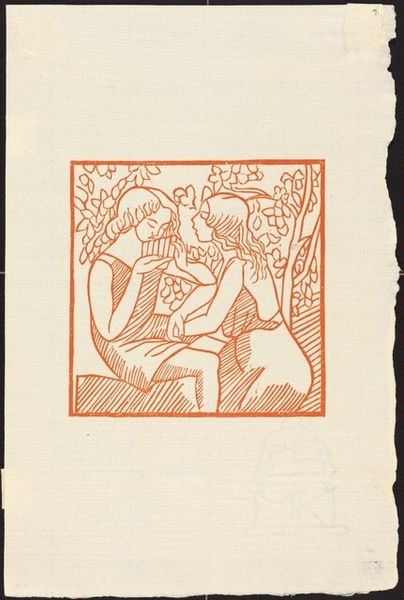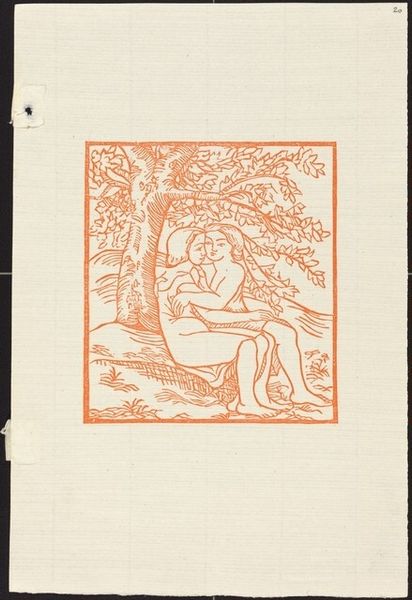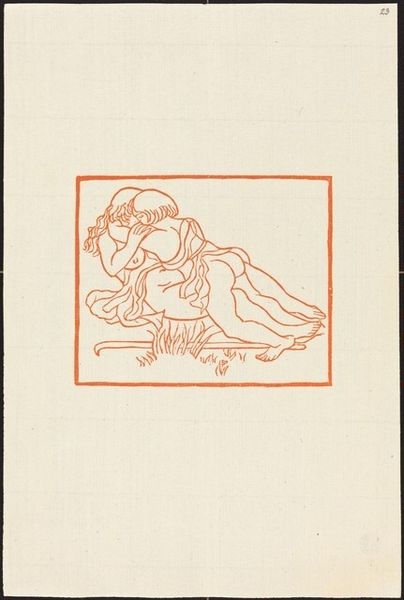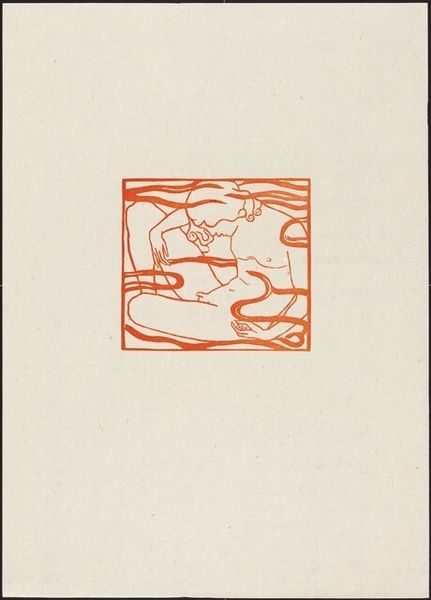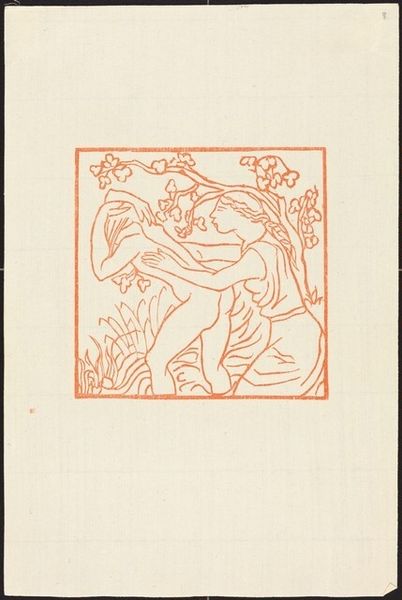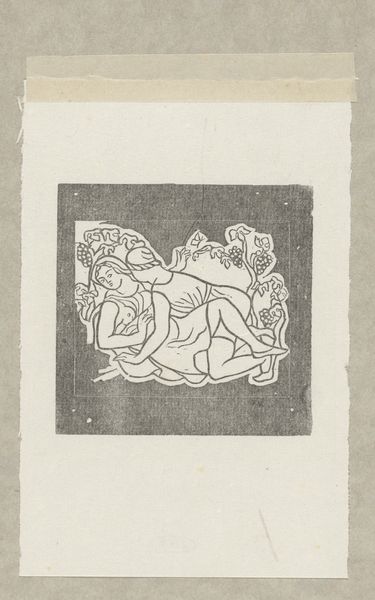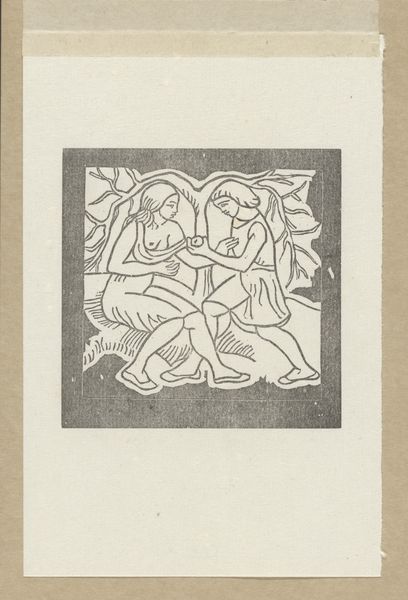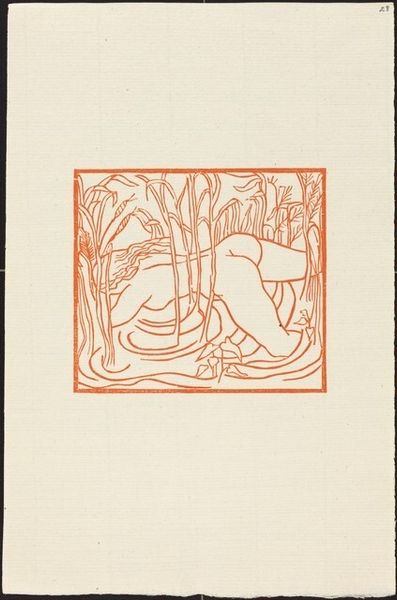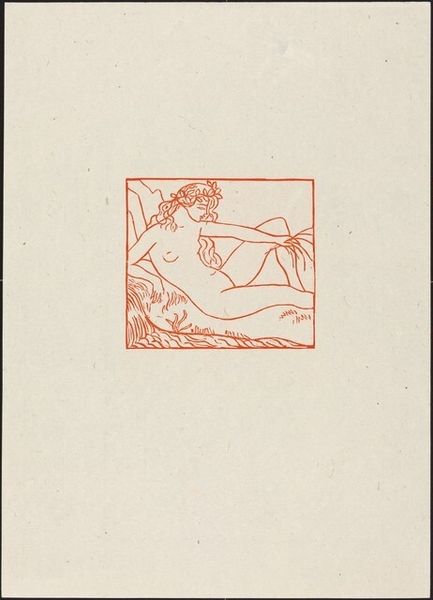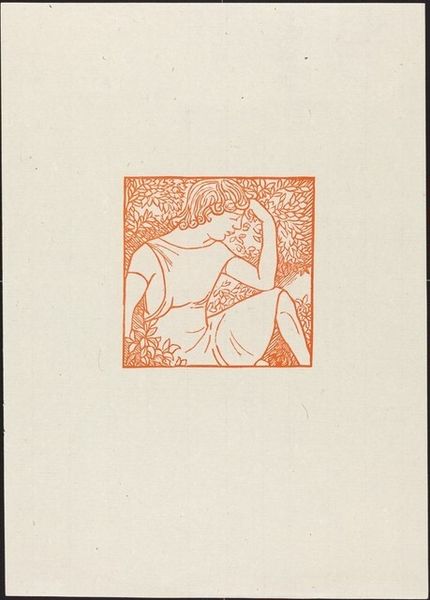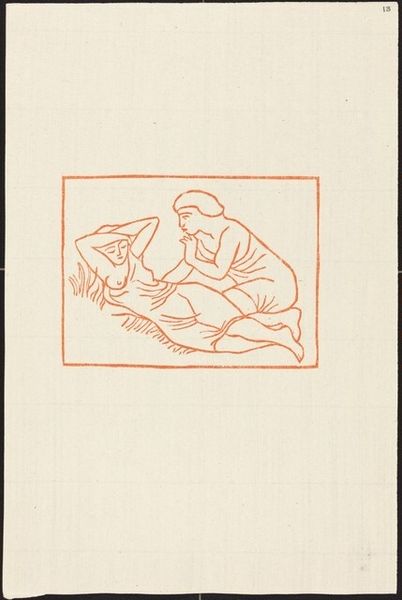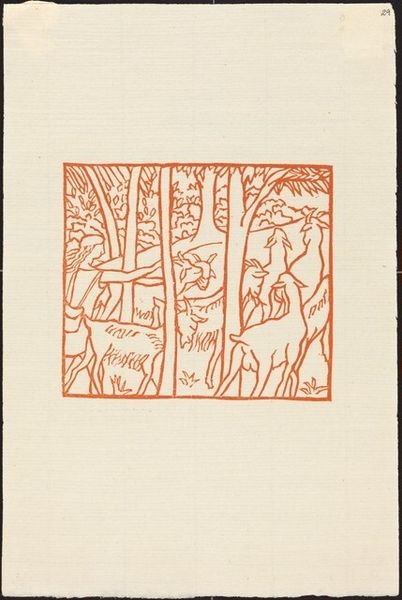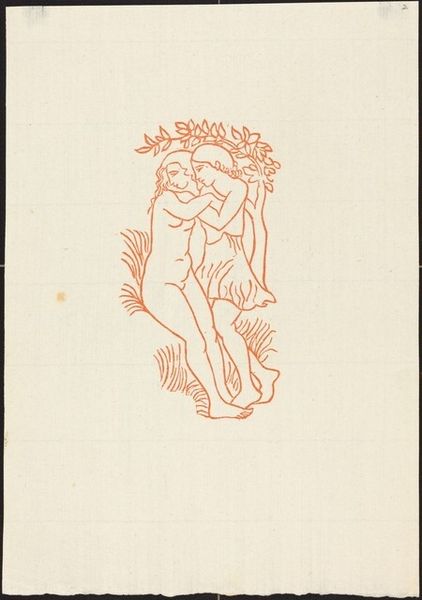
Second Book: The Vintage (Pendant les vendanges) Possibly 1937
0:00
0:00
Copyright: National Gallery of Art: CC0 1.0
Curator: The copper-toned lines in Aristide Maillol's etching, possibly from 1937, called "Second Book: The Vintage (Pendant les vendanges)" give it such a warm, immediate feel. Two women rendered with spare, confident lines sit amid grape vines. What strikes you initially? Editor: A feeling of languid abundance, almost Dionysian. The lines suggest a lightness, but the figures, especially the grapes, are dense with suggestion. There’s a casual, timeless feeling here, yet it feels distinctly rooted in a specific aesthetic of its time. Curator: Absolutely. Maillol was deeply interested in reviving classical forms, positioning the female nude not as a spectacle but as an embodiment of beauty and strength. The vintage, or grape harvest, traditionally celebrates the bounty of nature, which in turn celebrates the fecundity of womanhood. This is an image steeped in classical ideals of idealized womanhood. Editor: You're right, I'm seeing those classicising curves. Note the presence of the vine. It evokes the classical myth of Dionysus, certainly, but grapes themselves are packed with symbolism: abundance, sacrifice, fertility. This scene isn’t just two women and grapes, it is archetypal femininity and the rich cyclical rituals of the harvest. Curator: And note the subtle details that give this print a more complex resonance. While seemingly a simple illustration, Maillol doesn't shy away from depicting sensuality. He represents women enjoying each other’s company—the tenderness expressed in the woman embracing the other. The viewer gets a strong sense of a deep bond and not the traditional passive representation. Editor: That closeness is key, challenging potentially patriarchal readings of the nude form, and placing these women instead in an image of mutual sensuality and generative power. The etching method allows for a simplicity, making us see line and form in their purest manifestation, highlighting that intimate exchange of glances. The vintage itself also speaks to cultural rituals: communal feasting and celebration. Curator: Looking at the work in terms of social rituals allows for reflection. This could prompt us to reflect how different understandings of gender impact traditions like celebrating womanhood and harvest or abundance. It has certainly challenged my perspective! Editor: And I agree. It brings home that art invites not just passive looking, but an active uncovering of layered histories embedded in symbol. Thanks to the bold lines and subtle visual cues we see so much here.
Comments
No comments
Be the first to comment and join the conversation on the ultimate creative platform.
